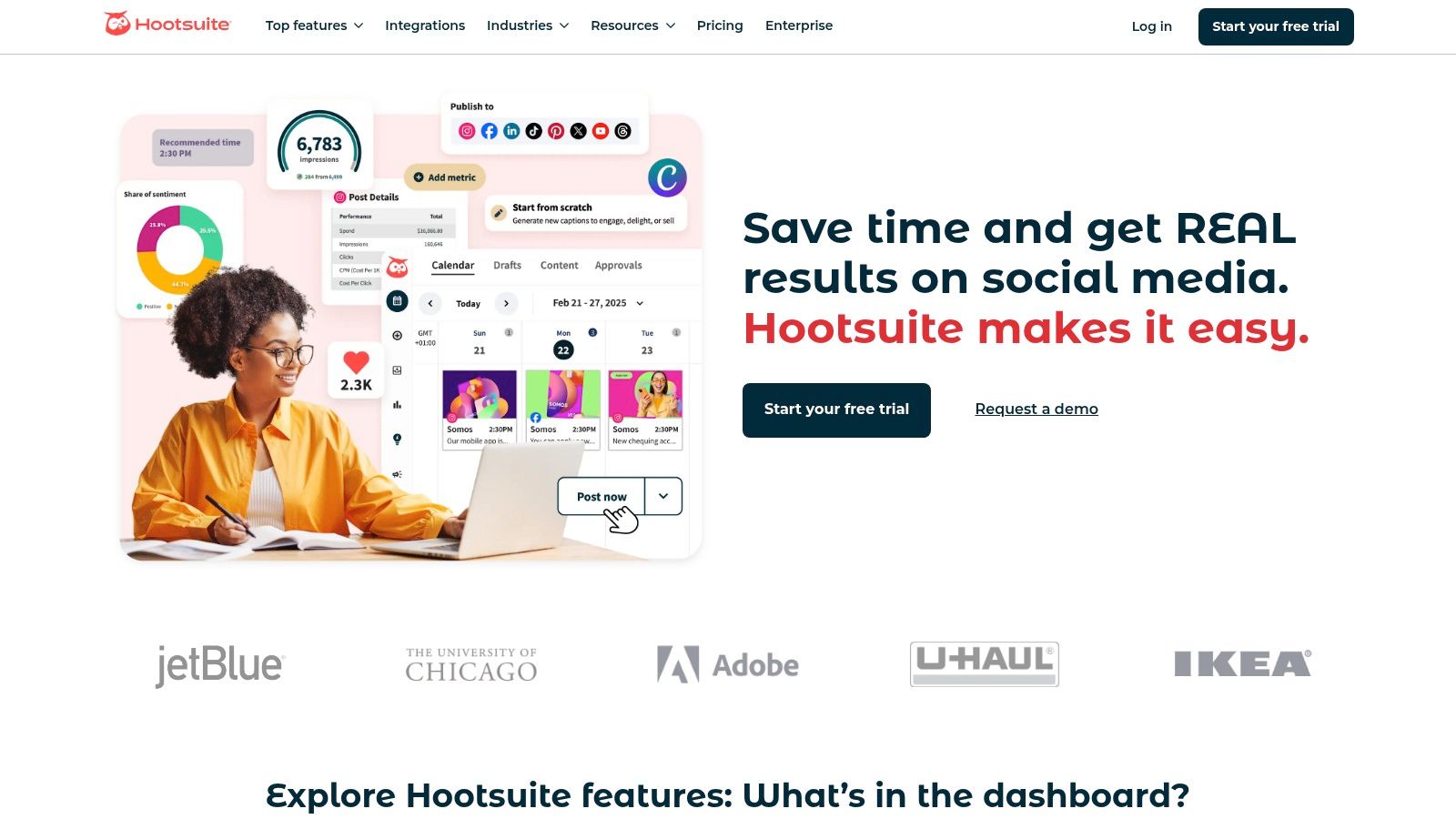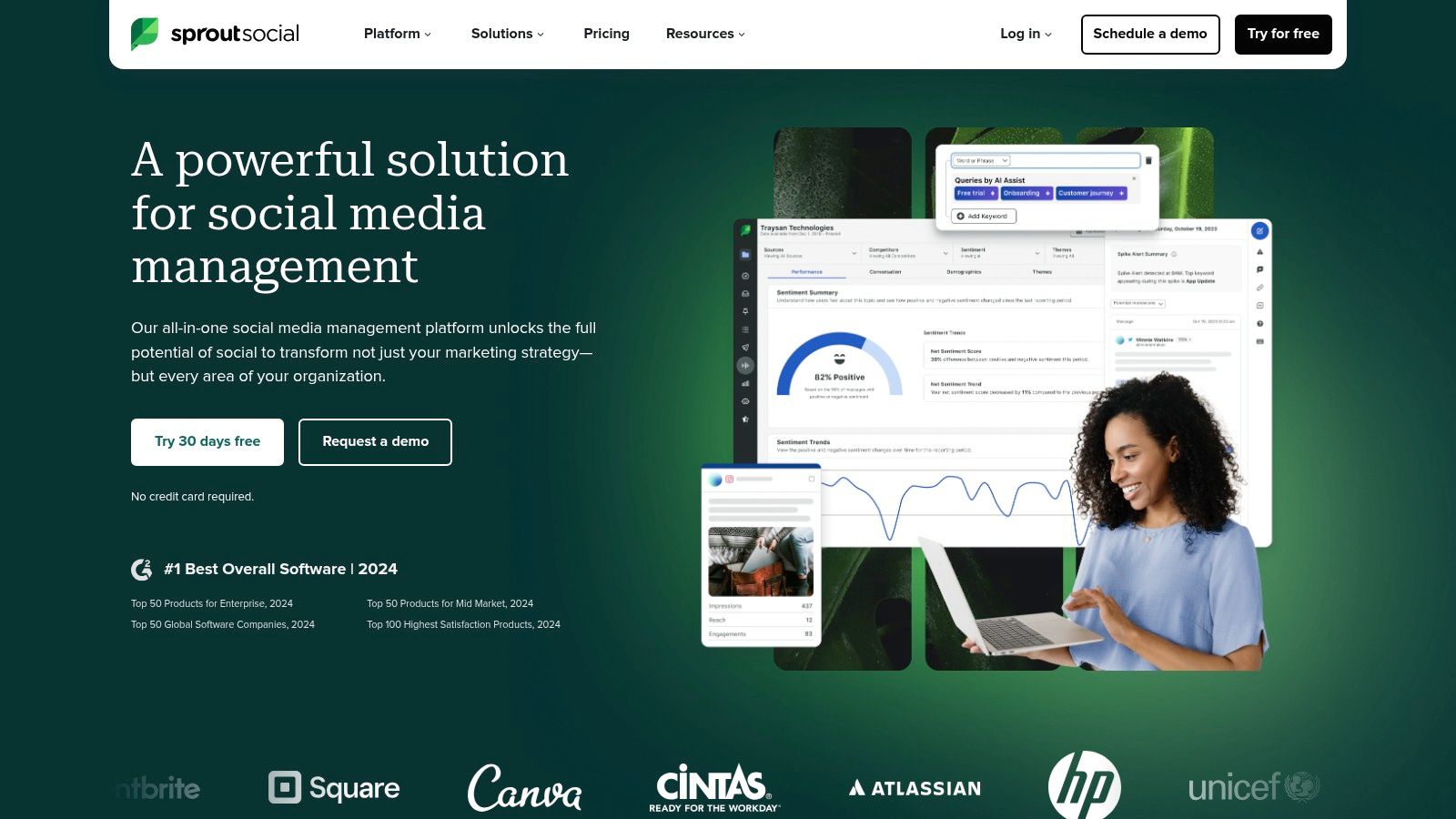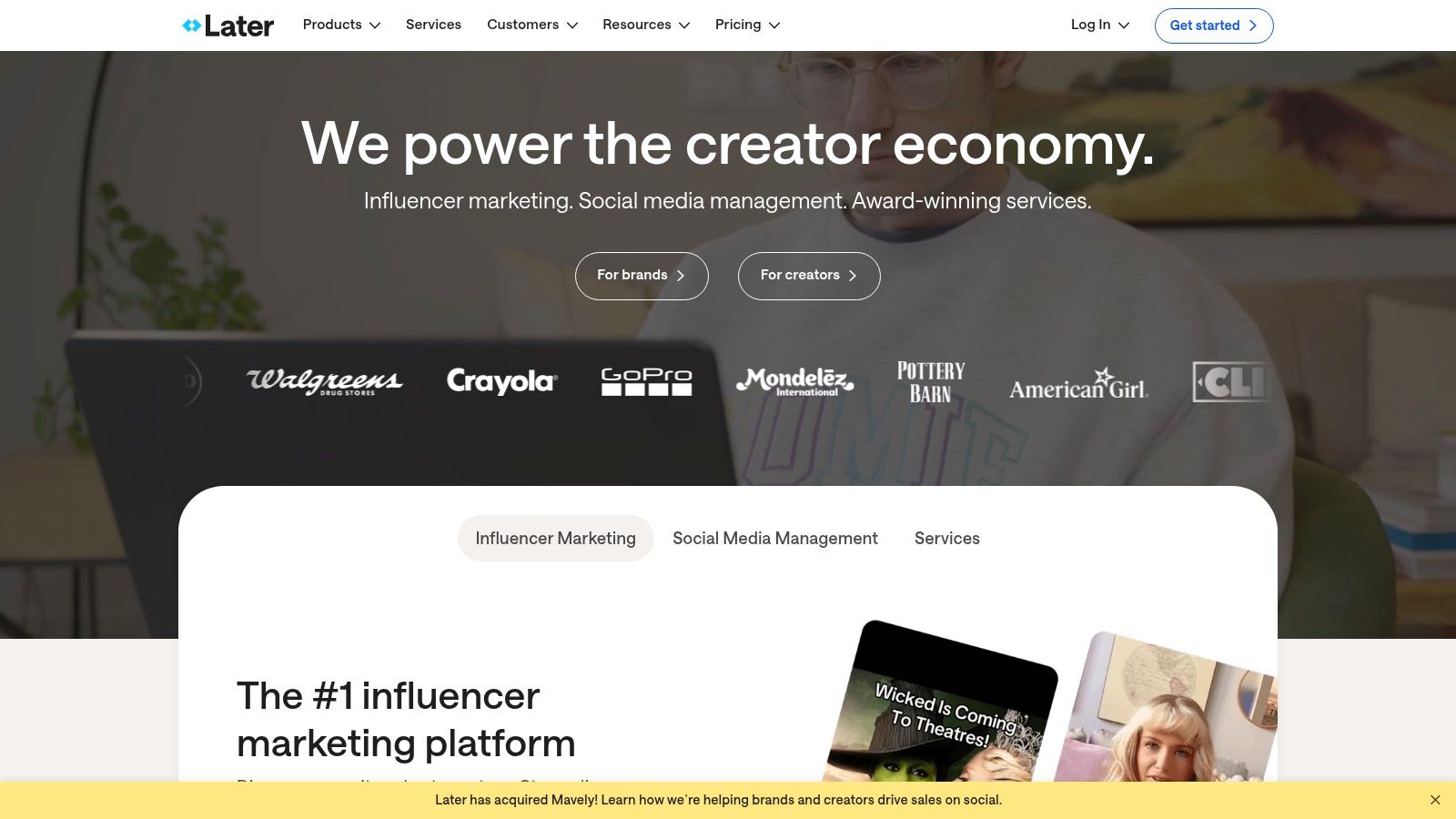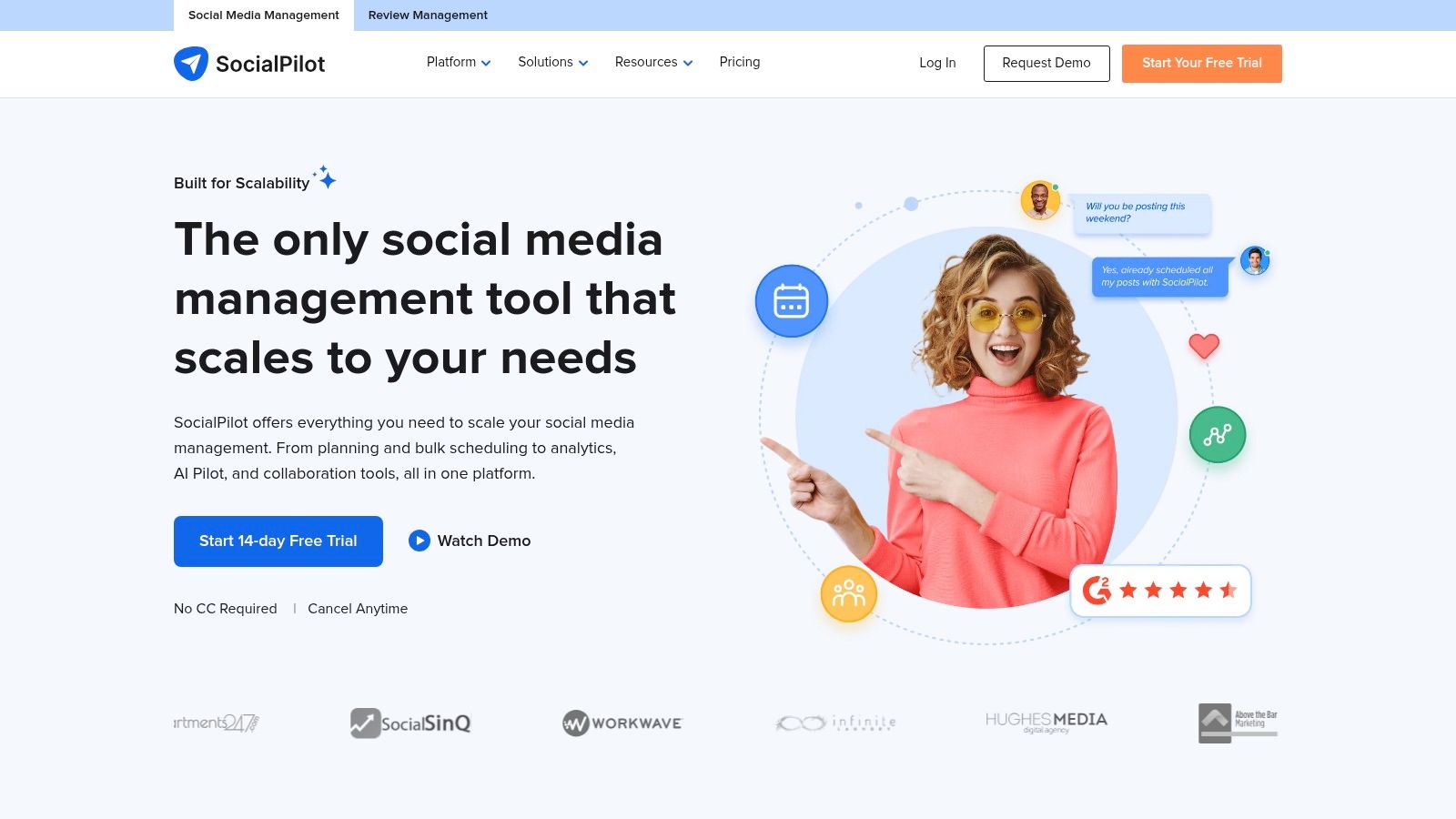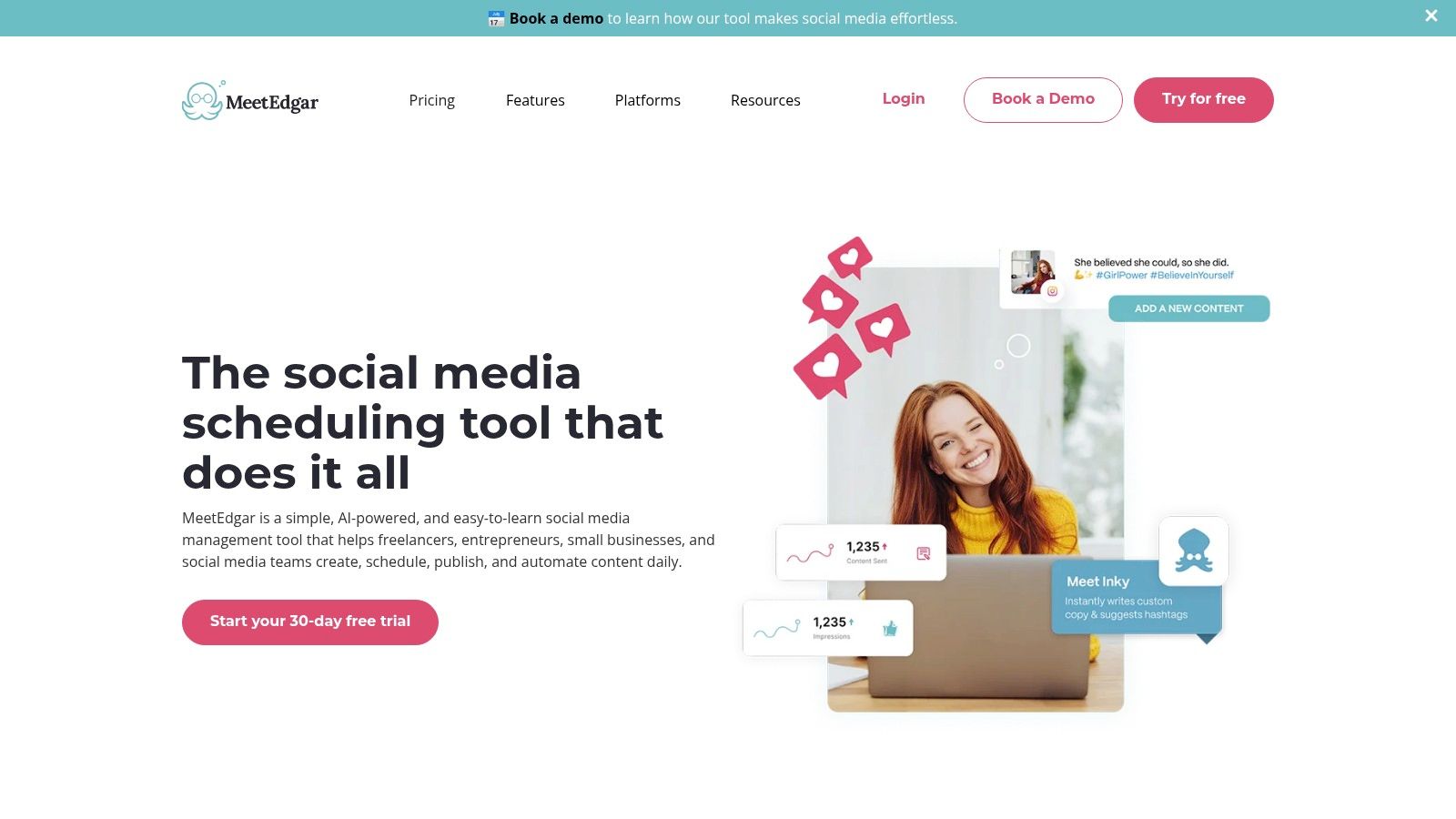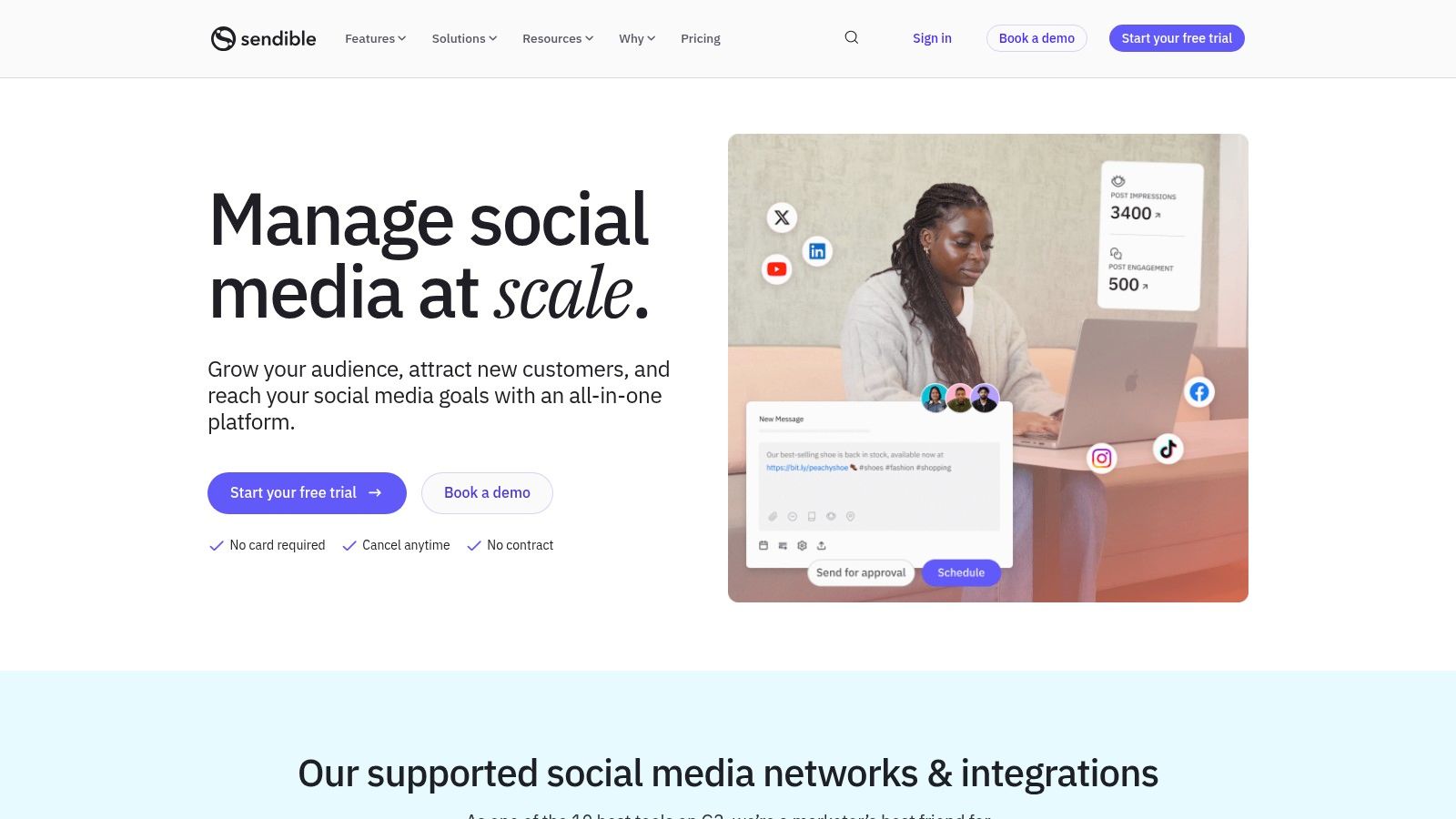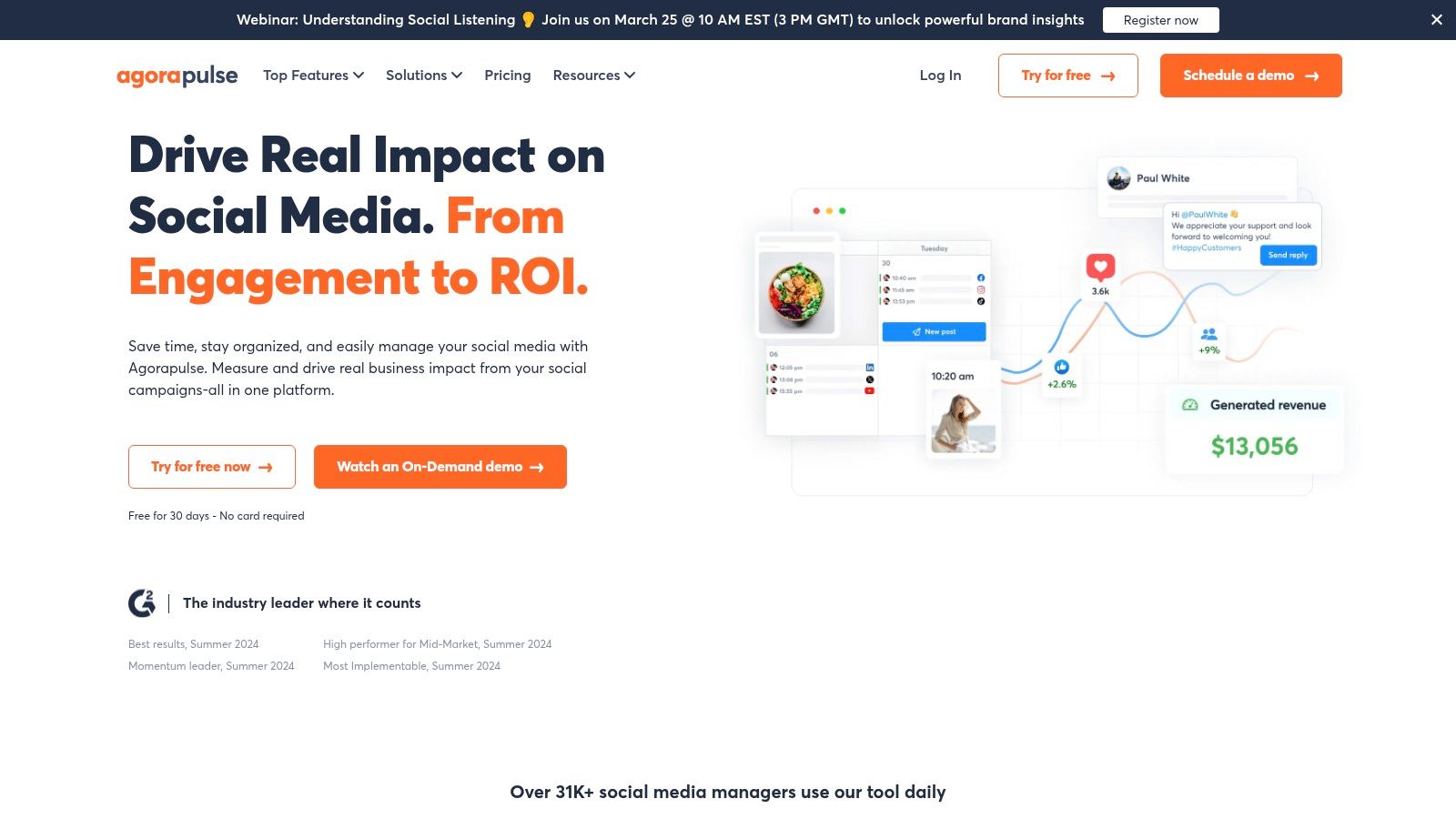Level Up Your Social Media Game
Managing multiple social media accounts can be a real challenge. Creating engaging content, analyzing data, and maintaining a consistent presence across different platforms takes time and effort. Social media schedulers offer a solution by allowing you to plan, schedule, and analyze your social media activity from one central hub. This eliminates inconsistent posting, manual uploads, and the difficulty of tracking performance across various networks.
However, choosing the right social media scheduler requires careful consideration. Key factors include supported platforms, collaboration tools, analytics capabilities, user-friendliness, and pricing. A good tool will provide a streamlined workflow for scheduling posts, engaging with your audience, and measuring results. Some platforms offer free plans for basic needs, while others offer tiered pricing based on users, connected profiles, or advanced features. Technical aspects like mobile app availability, integration with other marketing tools like HubSpot, and platform reliability are also important.
Choosing the Right Scheduler for Your Needs
There are several key questions to ask yourself when choosing a scheduler:
- Which social media platforms do you use? Ensure the scheduler supports all the networks relevant to your business.
- What is your budget? Explore free options or paid plans that align with your needs and resources.
- Do you need collaboration features? If you work with a team, consider tools that allow for shared access and workflows.
- How important are analytics? Choose a platform that offers in-depth analytics to track your performance and identify areas for improvement.
This comparison explores eight leading social media scheduling tools, highlighting their strengths, weaknesses, and pricing models. It aims to equip you with the knowledge to select the perfect platform for boosting your social media presence, increasing engagement, and improving your overall social media strategy. Discover the tool that will transform your social media management from chaotic to controlled.
1. Hootsuite
Hootsuite is a veteran in the social media management world. This comprehensive platform is ideal for businesses and teams looking to simplify their social media presence. Its core strength lies in its centralized dashboard. From this single point, you can manage multiple networks, making scheduling, monitoring, and reporting significantly easier.
Imagine managing your Facebook, Instagram, Twitter, LinkedIn, YouTube, and Pinterest accounts all in one place. Hootsuite makes this possible, allowing you to schedule up to 350 posts in bulk. This feature is a major time saver for busy social media managers.
Beyond scheduling, Hootsuite provides content curation suggestions and RSS feed integration. These tools help you discover and share relevant content effortlessly. For team collaboration, Hootsuite offers robust features, including approval workflows. This helps maintain consistent brand messaging and prevents unauthorized posts.
Measuring Your Social Media ROI with Hootsuite
Need to demonstrate the value of your social media activities? Hootsuite offers advanced analytics and custom reporting features. These tools give you the data you need to track campaign performance and demonstrate its effectiveness. Furthermore, integration with over 150 applications extends Hootsuite’s functionality even further, connecting your social media efforts with other important business tools. For more helpful information, check out our sitemap.
Weighing the Pros and Cons of Hootsuite
While Hootsuite offers a wide range of features, there are some drawbacks to consider. The platform's pricing is higher than some competitors, and the interface can be a bit overwhelming for new users. This complexity can lead to a steeper learning curve. Some advanced features, such as increased post scheduling limits and more detailed analytics, are available only on the higher-tier plans. Finally, while Hootsuite supports Instagram, the functionality is somewhat limited compared to using Instagram's own publishing tools.
Pros:
- Comprehensive all-in-one platform for social media management
- Robust team collaboration features
- Extensive third-party app integrations
- Strong security and compliance features for enterprise users
Cons:
- Higher pricing compared to many competitors
- Interface can feel cluttered and has a steeper learning curve
- Some advanced features require higher-tier plans
- Limited Instagram functionality compared to native publishing
Website: https://hootsuite.com
This tool is particularly useful for various individuals and groups. Tech enthusiasts managing multiple accounts, business professionals streamlining their marketing, and digital marketers requiring in-depth analytics can all benefit. Even remote teams collaborating on campaigns can leverage Hootsuite’s scheduling and analytics capabilities.
2. Buffer
Buffer is a popular social media management platform, particularly well-suited for individuals and small businesses. Its clean interface and intuitive design make scheduling and analyzing social media content straightforward, even for users without a technical background. Buffer's emphasis on simplicity and user-friendliness makes it a great option, especially for those who value efficient scheduling over advanced features like automation or social listening.
Buffer offers its services primarily through two key products: Publish and Analyze. Publish focuses on content scheduling and publishing, while Analyze is dedicated to performance tracking and reporting. This separation allows users to select the specific features they need and tailor their subscription accordingly.
Key Features of Buffer
Buffer boasts a range of features designed to streamline your social media management:
- Instagram First Comment Scheduling: Plan your hashtags and additional context within the first comment, keeping your captions clean and engaging.
- Pinterest-Specific Scheduling: Optimize your Pinterest strategy with tailored features for the platform’s visual nature.
- Custom Video Thumbnail Selection: Choose the most compelling thumbnail for your videos to maximize click-through rates.
- Calendar View for Content Planning: Visualize your scheduled content in a calendar format for better organization and planning.
- Browser Extension for Quick Sharing: Easily share content you find online directly to your Buffer queue.
Practical Applications
Buffer can be implemented across a variety of scenarios:
- Small Businesses and Startups: Manage multiple social media profiles efficiently without needing a dedicated social media manager.
- Bloggers and Content Creators: Schedule the promotion of new blog posts and articles across various platforms.
- Marketing Teams: Maintain a consistent brand presence and schedule marketing campaigns.
- Individuals: Streamline personal social media activity and maintain an active online presence.
Pros and Cons of Using Buffer
Like any platform, Buffer has its advantages and disadvantages.
Pros:
- User-Friendly Interface: Easy to navigate and learn, even for beginners.
- Affordable Pricing: Offers various plans to suit different budgets and needs.
- Excellent Mobile Apps: Schedule and monitor social media activity from anywhere.
- Consistent Product Updates: Buffer actively develops and improves its platform based on user feedback.
Cons:
- Limited Reporting (Lower Tiers): More in-depth analytics may require a higher-tier subscription.
- Fewer Advanced Features: Lacks some features like detailed social listening and competitor analysis found in more robust tools.
- No Direct Social Inbox (Basic Product): Responding to comments and messages might require switching platforms or upgrading.
- Limited Content Suggestions: Content curation and discovery features are less comprehensive than some alternatives.
Implementation and Setup Tips
Here are a few tips to get started with Buffer:
- Free Trial: Begin with a free trial to explore the platform and its features.
- Connect Accounts: Connect all your relevant social media accounts during setup.
- Browser Extension: Utilize the browser extension for quick and convenient content sharing.
- Buffer Resources: Explore Buffer's resources and tutorials to maximize the platform’s potential.
Website: Buffer
Buffer’s strength lies in its simplicity and ease of use, even if it doesn't have the extensive feature set of some larger social media management suites. It's a great solution for individuals and small businesses seeking an affordable and efficient way to manage their social media presence without being overwhelmed by complex functionalities. Its focus on core functionality and user experience makes it a valuable tool for those prioritizing streamlined scheduling and consistent posting.
3. Sprout Social
Sprout Social stands out as a comprehensive platform perfect for businesses that value in-depth social listening, analytics, and efficient client communication. It's more than a simple scheduling tool. Sprout Social serves as a central hub for managing your social media presence, engaging with your audience, and understanding how your campaigns are performing. It's a powerful asset designed for dedicated social media marketers and customer service teams.
Imagine easily scheduling a week's worth of content across various platforms. Then, picture using Sprout Social's Smart Inbox to manage all comments and messages from one convenient dashboard. This streamlined approach saves significant time and ensures your brand messaging remains consistent.
Moreover, Sprout Social's advanced reporting provides valuable data on audience demographics, engagement patterns, and what your competitors are doing. This data empowers you to make informed decisions and refine your social media strategy. For instance, you can monitor the success of particular hashtags, analyze competitor tactics, and determine the best times to post for maximum reach and engagement.
Features
- Powerful social listening and trend monitoring: Stay informed about industry discussions and spot emerging trends.
- Comprehensive reporting with competitive analysis: Get detailed performance insights and compare your results against competitors.
- Smart Inbox for unified message management: Simplify your communication by responding to all messages and comments from a single location.
- Automated scheduling with optimal send time recommendations: Reach a wider audience by scheduling content at times proven to generate higher engagement.
- CRM integration capabilities: Connect with existing CRM systems to improve customer relationship management.
Pros
- Excellent unified inbox for managing engagement.
- Superior analytics and reporting features.
- Robust customer support.
- Strong team workflow and approval processes.
Cons
- Premium pricing: This might be a barrier for smaller businesses.
- No free plan: This limits accessibility for those starting out.
- Steeper learning curve: The extensive features may require more time to master.
- Limited report customization: Some report types offer less flexibility than others.
While there isn't a free version of Sprout Social, the paid plans cater to a variety of business needs. You can find detailed pricing information on their website. The technical requirements are minimal; you just need a web browser and an internet connection. Compared to platforms like Hootsuite or Buffer, Sprout Social emphasizes social listening and CRM functionality. This makes it a good choice for businesses concentrating on cultivating and strengthening customer relationships.
Implementation Tip
When setting up Sprout Social, take the time to properly configure the Smart Inbox and link all your relevant social media profiles. This will allow you to manage all your communication effectively from one central location. You may also find helpful resources on our Sitemap related to digital marketing and online tools.
Website: Sprout Social
4. Later
Later (formerly Latergramme) began as a scheduling tool primarily for Instagram. It has since evolved into a multi-platform solution designed for visual-first social media marketing. Its intuitive visual content calendar and robust Instagram features make it a strong option for businesses and individuals focused on impactful imagery. Its user-friendliness for visually-driven campaigns and dedicated Instagram marketing power earned it a place on this list.
Later truly excels for businesses heavily reliant on Instagram. Features like Instagram Stories scheduling, a visual Instagram planner (allowing a preview of your feed's aesthetic before posting), and tailored hashtag suggestions for optimal reach are invaluable. The drag-and-drop interface of the visual content calendar simplifies planning and scheduling across other platforms like Pinterest, Facebook, Twitter, and TikTok. This visual approach empowers marketers to quickly map out and preview their content strategy across a month, week, or even a day, ensuring a consistent and engaging brand presence.
Imagine a fashion blogger preparing their weekly outfits and corresponding Instagram posts. Using Later, they can effortlessly drag and drop photos onto the calendar, pre-write captions, research hashtags, and schedule posts for optimal times, all within a visually intuitive interface. Similarly, a restaurant promoting daily specials can visually plan their Instagram feed, ensuring consistent and enticing food photography.
Later also offers a media library for storing and organizing visual content, keeping assets readily available for scheduling. The user-generated content tools simplify discovering and reposting relevant content, further enriching your social media presence.
Features
- Visual content calendar with drag-and-drop interface
- Instagram Stories scheduling
- Media library for storing and organizing visual content
- User-generated content tools for finding and reposting
- Hashtag suggestions and analytics
Pros
- Best-in-class visual planning tools
- Excellent Instagram-specific features
- User-friendly interface for visual content creators
- Affordable starter plans
Cons
- More limited functionality for non-visual platforms (e.g., text-focused platforms like Twitter may not benefit as much)
- Fewer advanced analytics compared to enterprise-level social media management suites like SproutSocial or Hootsuite
- Limited team collaboration features in lower pricing tiers
- Not as comprehensive for full social media management as some other tools on this list
Pricing and Setup
Website: Later
Pricing (Subject to change – Check the Later website for the most up-to-date pricing): Later provides various pricing tiers, starting with a free plan for individual users with limited functionality. Paid plans unlock additional features, more scheduled posts, and support for more social profiles.
Implementation/Setup Tips
- Begin with a free trial to explore the platform.
- Connect your social media accounts and import your media library.
- Use the visual calendar to plan your content strategy.
- Experiment with hashtag suggestions and analytics to optimize reach and engagement.
While Later may not be the perfect solution for businesses needing in-depth analytics or managing primarily text-based content, it's a powerful tool for individuals and organizations prioritizing visually engaging social media marketing, especially on Instagram. Its intuitive interface and emphasis on visual planning simplify creating and scheduling captivating content, saving time and boosting your overall social media strategy.
5. SocialPilot
SocialPilot offers a compelling blend of robust features and affordability. This makes it a practical choice for businesses and agencies seeking effective social media management without overspending. While it may not have the highly specialized features of some premium platforms, SocialPilot's comprehensive toolset addresses a wide range of needs, especially for those prioritizing efficiency and value.
SocialPilot is a budget-friendly social media scheduling tool ideal for small businesses, agencies, and even enterprises. It supports major social networks like Facebook, Twitter, LinkedIn, Instagram, Pinterest, TikTok, Google My Business, and VK. The platform helps users efficiently manage their social presence with content curation suggestions, analytics, and team collaboration features.
Features and Benefits
Here's a closer look at what SocialPilot offers:
-
Bulk Scheduling with CSV Upload: This feature is perfect for digital marketers and agencies managing multiple accounts. Upload pre-planned content in bulk, saving valuable time and effort. Schedule a month's worth of content across various platforms in minutes.
-
Content Curation and Suggestions: Need content ideas? SocialPilot provides curated content suggestions to keep your social media feeds fresh and engaging, helping you overcome content creation challenges.
-
Client Management Portal for Agencies: This portal simplifies client collaboration by allowing agencies to manage approvals and feedback directly within the platform. It streamlines client communication and reporting.
-
White-Label PDF Reports: Generate professional reports showcasing campaign performance for your clients. This helps reinforce your value and demonstrate tangible results.
-
Social Inbox for Facebook Engagement: Manage and respond to Facebook comments and messages directly within SocialPilot, centralizing your engagement activities.
Pros
-
Excellent Value for Money: SocialPilot offers a comprehensive feature set at a lower price than many competitors. This makes it a smart choice for budget-conscious businesses.
-
Strong Client Management Features: The client management portal is a standout feature, simplifying communication and reporting for agencies.
-
Good Bulk Scheduling Capabilities: The CSV upload functionality streamlines content scheduling, especially for large volumes of content.
-
Intuitive and Clean User Interface: SocialPilot's user-friendly interface is easy to navigate, even for those new to social media management tools.
Cons
-
More Limited Instagram Functionality: While SocialPilot supports Instagram, some advanced features offered by specialized Instagram management tools might be limited, such as direct message scheduling and in-depth analytics.
-
Less Robust Analytics: SocialPilot's analytics, while helpful, may not be as comprehensive as those provided by dedicated enterprise-level social media analytics platforms.
-
Facebook-Only Social Inbox: The social inbox feature is currently limited to Facebook interactions.
-
Fewer Integrations: SocialPilot may have fewer integration options compared to larger, more established platforms.
Pricing
SocialPilot offers various pricing tiers starting from approximately $30/month. Visit their website for the latest pricing details.
Implementation/Setup Tips
-
Start with a Free Trial: Explore SocialPilot's features and functionality before subscribing.
-
Connect Your Social Media Accounts: Integrate your social media profiles to start scheduling and managing content efficiently.
-
Utilize the Content Calendar: Plan your content strategy and visualize your posting schedule.
-
Explore the Analytics Dashboard: Track your performance and gain valuable insights into audience engagement.
Website
SocialPilot is a strong option for businesses and agencies seeking a balanced, affordable, and powerful social media management solution. Its strengths lie in its well-rounded feature set, intuitive interface, and excellent value. While it may not cover every niche requirement, its core functionality provides a robust platform for efficient social media management.
6. MeetEdgar
MeetEdgar provides a unique approach to social media scheduling. Instead of constantly needing new content, MeetEdgar recycles your existing high-performing, evergreen material. This is a significant advantage for busy professionals, digital marketers, and businesses aiming for a consistent social media presence without the constant pressure to create fresh content.
MeetEdgar organizes your social media updates into categories based on your content pillars. These could include blog posts, product promotions, industry news, or inspirational quotes. Once organized, MeetEdgar automatically pulls from these categories and schedules posts according to your predefined schedule, keeping your social channels active. It also generates variations of your posts to keep your content engaging.
Features
-
Automatic Content Recycling: MeetEdgar's core strength is its ability to continuously recycle evergreen content from your library.
-
Category-Based Scheduling: Organize content effectively and manage when different types of content are published.
-
A/B Testing: Experiment with different post variations to see what performs best and optimize engagement.
-
Automatic Variation Generation: This feature prevents your recycled content from appearing repetitive.
-
RSS Feed Integration: Automatically import content from your blog or other RSS feeds.
Pros
-
Time Savings: The evergreen content approach saves significant time, a major plus for busy individuals and businesses.
-
Prevents Repetitiveness: Automatic content variations keep your feed dynamic, even with recycled content.
-
Consistent Posting: MeetEdgar excels at maintaining a consistent posting schedule across your social media platforms.
-
Simple Organization: The category-based system makes content management and scheduling very straightforward.
Cons
-
Limited Platform Support: It's important to confirm that MeetEdgar supports the social media platforms you use.
-
Minimal Analytics: While offering basic analytics, you might need additional tools for deeper analysis.
-
Higher Pricing: The starting price point might be a barrier for smaller businesses or individuals.
-
No Free Plan: MeetEdgar requires a paid subscription.
Pricing (Subject to Change)
Check the MeetEdgar website for the most up-to-date pricing. They typically offer tiered plans based on the number of social accounts and scheduled posts.
Implementation/Setup Tips
-
Categorize Content: Begin by organizing your best-performing evergreen content into relevant categories.
-
Create a Posting Schedule: Define your posting frequency for each platform and prioritize which categories to post from.
-
Utilize A/B Testing: Experiment with post variations to identify what resonates best with your audience.
-
Leverage RSS Feeds: Automate content importing from your blog or other relevant RSS feeds.
Why MeetEdgar Deserves Its Place in the List
MeetEdgar's unique focus on evergreen content and automation makes it a valuable tool for maximizing content reach and maintaining a consistent social media presence with minimal effort. While the pricing and limited platform support may not suit everyone, if evergreen content and automation are central to your strategy, MeetEdgar is worth considering.
Website: https://meetedgar.com
7. Sendible
Sendible is a powerful social media management platform designed for agencies managing multiple client accounts. While other tools offer scheduling and engagement features, Sendible stands out with its robust client management capabilities, customizable dashboards, and white-label reporting. This makes it a great choice for agencies wanting to streamline their workflow, improve client communication, and project a professional image.
For digital marketing agencies, effectively managing numerous client campaigns is crucial. Sendible allows agencies to create custom dashboards for each client, providing a centralized view of all social media activity. This granular control allows for efficient content scheduling, performance tracking, and client collaboration. Imagine seamlessly switching between client dashboards, scheduling posts across platforms, and generating performance reports with your agency's logo—Sendible makes this a reality.
Beyond agency use, Sendible's features also benefit business professionals and digital marketers working with multiple brands or campaigns. The platform's content recommendation engine helps find relevant content, while the media library with Canva integration simplifies visual content creation. Sentiment analysis tools give valuable insights into brand perception, enabling proactive reputation management.
Key Features
- Multi-client management with custom dashboards: Manage multiple clients efficiently with dedicated dashboards.
- White-label reporting with smart reports: Create professional, branded reports showcasing client campaign performance.
- Content recommendation engine: Discover trending and relevant content to share with your audience.
- Media library with Canva integration: Streamline visual content creation with access to Canva's design tools.
- Sentiment analysis for brand monitoring: Track brand mentions and analyze sentiment to understand public perception.
Pros
- Excellent agency-focused features and client management.
- Strong content creation tools and integrations.
- Customizable reporting with white-label options.
- Good value for agencies managing multiple clients.
Cons
- Interface may not be as intuitive as some competitors.
- Mobile app functionality is limited.
- Steeper learning curve for new users.
- Some users have reported occasional performance issues.
Pricing
Sendible offers various pricing tiers based on the number of users and managed accounts. Visit their website for current pricing details.
Technical Requirements
Sendible is a web-based platform accessible from any modern browser. A mobile app is also available, though with limited functionality.
Implementation/Setup Tips
- Start by setting up client dashboards and assigning team members to specific accounts.
- Use the content calendar and scheduling tools to plan and automate content publishing.
- Explore the Canva integration to create engaging visual content.
- Customize the reporting templates to reflect your agency's branding.
- Use the sentiment analysis features to monitor brand reputation and address potential issues.
Comparison
Similar tools like Hootsuite and Buffer offer social media management, but Sendible’s focus on agency features, client management, and white-label reporting sets it apart.
Website
Sendible is a valuable tool for agencies and businesses needing a robust platform to manage multiple social media accounts and client campaigns. While there is a learning curve, the platform's powerful features and customizability make it a worthwhile investment for those seeking streamlined workflows, improved client communication, and professional brand presentation.
8. Agorapulse
Agorapulse is a comprehensive social media management platform perfect for businesses and agencies looking to streamline their workflows and boost engagement. This all-in-one tool combines scheduling, inbox management, monitoring, reporting, and team collaboration features in a user-friendly interface.
Imagine managing all your social media interactions from a single, unified inbox. With Agorapulse, you can assign messages and comments to team members and even automate responses to frequently asked questions. This feature is especially valuable for teams dealing with a high volume of online interactions.
Agorapulse goes beyond basic engagement by offering robust scheduling features, allowing you to plan and queue posts by category. The platform also excels in its reporting capabilities. By providing detailed ROI tracking and competitor benchmarking, Agorapulse allows you to demonstrate the true impact of your social media strategy.
Key Features and Benefits
- Unified Social Inbox: Streamline communication and improve response times with a centralized inbox for all your social media channels. Easily assign messages and comments to team members for efficient collaboration.
- Automated Moderation: Save time and maintain a consistent brand voice with automated moderation rules for comments and messages. Filter spam and respond to common inquiries automatically.
- In-Depth Reporting: Track your social media performance with detailed ROI and performance reporting. Gain valuable insights into your audience and measure the success of your campaigns.
- Streamlined Scheduling: Plan and schedule your social media content with ease. Categorize your posts for better organization and efficient content calendar management.
- Competitive Analysis: Stay ahead of the curve by analyzing your competitors' social media activity. Benchmark your performance against theirs and identify opportunities for improvement.
Pros and Cons of Using Agorapulse
Pros:
- Exceptional engagement management and social inbox features.
- Robust team collaboration and workflow tools.
- Comprehensive reporting and ROI tracking capabilities.
- User-friendly interface with a minimal learning curve.
Cons:
- Higher price point compared to some competitors like Hootsuite or Buffer.
- Limited integrations with other marketing tools.
- Some advanced features require a higher-tier subscription.
- Content curation features are not as robust as those offered by specialized tools.
Pricing and Technical Requirements
Agorapulse offers a variety of plans starting at approximately $79/month. Pricing scales based on the number of social profiles and users. For the most up-to-date pricing details, visit their website. As a cloud-based platform, Agorapulse is accessible through any web browser. Mobile apps are also available for iOS and Android devices.
Implementation and Setup Tips
Begin by connecting your social media profiles and setting up your team members within the platform. Familiarize yourself with the inbox features and define workflows for managing incoming messages and comments. Utilize the category-based scheduling to organize your content calendar effectively. Finally, explore the reporting features to track your performance and demonstrate your ROI. For additional resources related to social media management and other marketing tools, check out this helpful resource: Our full sitemap.
Agorapulse vs. the Competition
Compared to tools like Hootsuite or Buffer, Agorapulse prioritizes collaborative inbox management and comprehensive reporting. While Hootsuite and Buffer provide solid scheduling and basic engagement features, Agorapulse stands out by streamlining team workflows and offering in-depth performance analysis. If team collaboration and detailed reporting are top priorities, Agorapulse is an excellent choice.
Website: https://agorapulse.com
Head-to-Head: Top 8 Social Media Scheduling Tools
| Platform | Core Features ✨ | UX & Quality ★ | Target Audience 👥 | Value Proposition 💰 |
|---|---|---|---|---|
| Hootsuite | Bulk scheduling, analytics, multi-network support | Robust but cluttered ★★★☆☆ | Enterprises & agencies | Premium, extensive integrations |
| Buffer | Calendar view, browser extension, scheduling | Intuitive & streamlined ★★★★★ | Small businesses & beginners | Affordable, simple scheduling |
| Sprout Social | Unified inbox, detailed analytics, CRM integration | Powerful yet complex ★★★★☆ | Enterprises & agencies | Premium features, strong reporting |
| Later | Visual planning, drag-and-drop calendar, IG Stories | User-friendly for visuals ★★★★★ | Visual marketers, Instagram users | Affordable starter plans |
| SocialPilot | Bulk scheduling, content curation, client management | Clean and intuitive ★★★★☆ | Agencies & SMBs | Cost-effective, solid value |
| MeetEdgar | Automatic content recycling, category scheduling | Simple and automated ★★★☆☆ | Businesses focused on evergreen content | Niche solution, higher start price |
| Sendible | Multi-client management, white-label reporting, CRM | Agency-focused, moderate ★★★★☆ | Agencies managing clients | Good value for multi-client use |
| Agorapulse | Unified inbox, detailed ROI reporting, scheduling | Highly collaborative ★★★★★ | Teams and agencies | Higher price with strong ROI |
Ready to Schedule Your Success?
Whether you’re an agency juggling multiple clients, a small business building its brand, or an established company maintaining its online presence, the right social media scheduler can be a game-changer. We hope this comparison helps you make an informed decision.
Choosing the best tool from the options we've explored—Hootsuite, Buffer, Sprout Social, Later, SocialPilot, MeetEdgar, Sendible, and Agorapulse—depends on your unique needs. Consider these factors:
Implementation and Getting Started
Some tools, like Buffer, are known for their user-friendly interfaces, perfect for beginners. Others, like Sprout Social, offer more advanced features. These may require a steeper learning curve, but they also provide greater control and deeper analytics. Before committing, take advantage of free trials or demos.
Budget and Resources
Pricing varies significantly. Some platforms have freemium models with limited features, while others offer tiered subscriptions based on users, profiles, or scheduled posts. Consider your budget and resources. If you have a small team and limited funds, SocialPilot or Buffer might be good choices. Larger agencies with dedicated social media teams might find the investment in Sprout Social or Agorapulse worthwhile.
Integration and Compatibility
Make sure the tool integrates with the social media platforms you use. Most support major platforms like Facebook, Instagram, Twitter, and LinkedIn, but compatibility with niche platforms may differ. Check if the scheduler integrates with other tools in your marketing toolkit, such as your CRM or analytics dashboards. If you heavily rely on analytics, Agorapulse or Sprout Social’s reporting features might be beneficial.
Key Takeaways
Here's a quick recap of our recommendations:
- For ease of use and affordability: Buffer or SocialPilot
- For advanced analytics and reporting: Sprout Social or Agorapulse
- For automation and evergreen content: MeetEdgar
- For agencies managing multiple clients: Sendible or Hootsuite
- For visually focused brands: Later
Choosing the right social media scheduler is an investment in your online presence and productivity. Carefully consider your needs, budget, and desired features. These tools can streamline your workflow, expand your reach, and help you achieve your social media goals. Don't forget to take advantage of free trials to find the perfect fit. Good luck!






